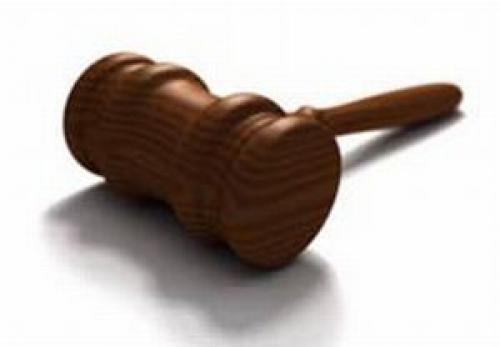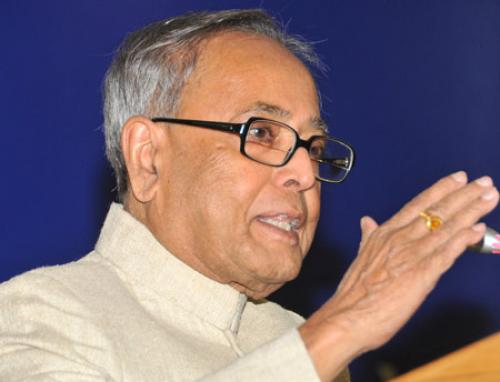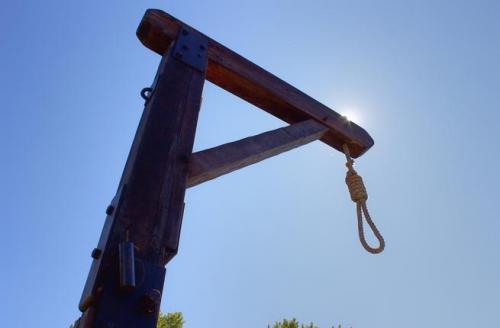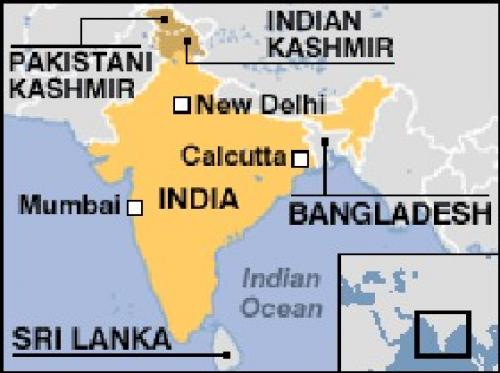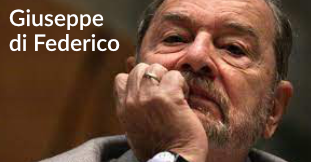situation:The death penalty is provided for by the Penal Code and by Art. 21 of the Constitution which states: "No person may be deprived of their life or personal freedom except in cases established by law."
In India, death-penalty offences include conspiracy against the Government; desertion or attempted desertion; terrorism; murder or attempted murder; inducement to suicide of a minor or a mentally-retarded person.
Section 303 of the Indian Penal Code (IPC) prescribes the death penalty alone with no alternative in cases where a convict serving a life sentence commits murder. The court under this section cannot exercise its discretion and award a lesser sentence.
The death penalty is also applicable under the military statutes (Army Act, 1950, Air Force Act, 1950, Navy Act, 1956).
In 1987 India passed the Commission of Sati Prevention Act which prescribes the death penalty for people found guilty of instigating sati, or sacrificial suicide by the widow, in cases where the suicide is successful.
On April 5, 2013, Indian President Pranab Mukherjee gave his assent to the anti-rape bill which details life prison terms and even death sentences for rape convicts, as well as stringent punishments for such offenses as acid attacks, stalking and voyeurism. Mukherjee accorded his assent to the Criminal Law (Amendment) Bill-2013 on Tuesday (April 2), brought against the backdrop of the country-wide outrage over the Delhi gang rape, when a 23-year-old woman was savagely raped and attacked by six men in a bus on 16 December 2012 in Delhi and died nearly two weeks later. The law, passed by the Lok Sabha (Lower House) on March 19 and by the Rajya Sabha (Upper House) on March 21, has replaced an ordinance promulgated on February 3. It amends various sections of the Indian Penal Code, the Code of Criminal Procedure, the Indian Evidence Act and the Protection of Children from Sexual Offences Act. With an aim of providing a strong deterrent against crimes such as rape, the new law states that an offender can be sentenced to rigorous imprisonment for a term which cannot be less than 20 years but which may extend to life, meaning imprisonment for the remainder of the convict's life, and a fine. It has provisions for handing out death sentence to offenders who may have been convicted previously for such crimes. The law, for the first time, defines stalking and voyeurism as non-bailable offences if repeated for a second time. Perpetrators of acid attacks will attract a 10-year jail sentence.
It also defines acid attacks as a crime, and it grants a victim the right to self-defense. It also has provisions for imposing a minimum 10-year jail term for perpetrators of such acts. The law has fixed the age for consensual sex at 18 years. New sections to prevent stalking and voyeurism were introduced following a strong demand from women's organizations.
According to statistics the death sentences are often overturned or commuted to life imprisonment by higher courts.
Also because death sentences must be confirmed by the Supreme Court, which ruled on 9 May 1980, in the landmark judgment “Bachan Singh v State of Punjab” that the death sentence as a punishment should be given only in the “rarest of rare” cases.
In the years following, the Supreme Court of India in its judgment has continued to make its contribution to minimize the use of the death penalty: in February 2010, the Court held that long incarceration and socio-economic factors leading to crime are relevant and mitigating considerations for commuting a death sentence to life imprisonment; in November 2013, the Court ruled that courts should record “special reasons” while awarding death penalty and “must” take into account the crime and the character of the criminal which should reflect “extreme depravity” to deserve such a punishment; in January 2014, in a landmark and significant judgement, the Court commuted the death penalty of 13 convicts to life on the ground of inordinate delay on part of President to decide their mercy pleas, while two others were given life sentence after they became mentally ill after several years on death row; in February 2014, the Court commuted the death sentence of four persons to life imprisonment on the ground of their young age and deprived socio-economic background, as well as their behaviour in prison which was very good and they were not beyond reformation; in July 2014, the Court commuted the death sentence of a 26-year-old youth to life term saying that the convict is an educated person so there are chances of his reform.
On 16 September 2016, the Supreme Court has further moved away from capital punishment by deciding to opt for a “judicial innovation” – the Special Category of Punishment – instead of the death penalty, in the case of Tattu Lodhi, a youth convicted of raping and killing a seven-year-old girl. The apex court awarded the convict 25 year jail term considering it appropriate punishment between death sentence and life imprisonment in heinous crimes. This judicial innovation helps “get rid of death penalty” and addresses the genuine concerns of the society to see justice done, a three-judge Bench led by Justice J. Chelameswar observed in its judgment. Special Category of Punishment is judicial innovation that will be veering away from capital punishment. It will be limited to a “very few cases”. In this case capital punishment will be shifted to life imprisonment without the benefit of release on remission for prolonged periods ranging from 25 to 30 years, if not more. This special category of Punishment for the first time was mentioned in the
Swami Shraddananda versus State of Karnataka judgment of the Supreme Court in 2008. But it was formalised by a Constitution Bench of the Supreme Court in the Rajiv Gandhi killers’ case (
Union of India versus Sriharan alias Murugan) in December 2015, when the apex Court had given itself the authority to tweak the sentencing laws and evolve a special category of sentence. The judicial innovation of the special category of punishment bridges the gap between capital punishment on the extreme and only 14 years of actual life imprisonment on the other. It may be considered as endeavour of the Supreme Court to make no party (convict or the society) a loser. Thus, it can be said that with judicial innovation of special category sentence the apex court may have found alternative to capital punishment.
In 2016 the Supreme Court did not confirm any of the seven appeals to death sentences (it confirmed one death sentence on revision request). In 2015 the Supreme Court confirmed eight of the nine appeals. There are seventyone aplleas pending before the SC. The High Courts confirmed 15 death sentences in 2016 (issued by courts in the former years), commuted 44 sentences and acquitted 14 people.
On 16 September 2016, the Supreme Court has further moved away from capital punishment by deciding to opt for a “judicial innovation” – the Special Category of Punishment – instead of the death penalty, in the case of Tattu Lodhi, a youth convicted of raping and killing a seven-year-old girl. The apex court awarded the convict 25 year jail term considering it appropriate punishment between death sentence and life imprisonment in heinous crimes. This judicial innovation helps “get rid of death penalty” and addresses the genuine concerns of the society to see justice done, a three-judge Bench led by Justice J. Chelameswar observed in its judgment. Special Category of Punishment is judicial innovation that will be veering away from capital punishment. It will be limited to a “very few cases”. In this case capital punishment will be shifted to life imprisonment without the benefit of release on remission for prolonged periods ranging from 25 to 30 years, if not more. This special category of Punishment for the first time was mentioned in the Swami Shraddananda versus State of Karnataka judgment of the Supreme Court in 2008. But it was formalised by a Constitution Bench of the Supreme Court in the Rajiv Gandhi killers’ case (Union of India versus Sriharan alias Murugan) in December 2015, when the apex Court had given itself the authority to tweak the sentencing laws and evolve a special category of sentence. The judicial innovation of the special category of punishment bridges the gap between capital punishment on the extreme and only 14 years of actual life imprisonment on the other. It may be considered as endeavour of the Supreme Court to make no party (convict or the society) a loser. Thus, it can be said that with judicial innovation of special category sentence the apex court may have found alternative to capital punishment.
In 2016 the Supreme Court did not confirm any of the seven appeals to death sentences (it confirmed one death sentence on revision request). In 2015 the Supreme Court confirmed eight of the nine appeals. There are seventyone aplleas pending before the SC. The High Courts confirmed 15 death sentences in 2016 (issued by courts in the former years), commuted 44 sentences and acquitted 14 people.
According the “Death Penalty India Report”, published in February 2016 by the National Law University, Delhi, during the period 2000-2015 (January), of the 1,486 death sentences imposed by the trial courts for which the outcome across the appellate stages could be traced, only 4.9% (73 prisoners) remained on death row after the appeal in the Supreme Court was decided. Of the total death sentences, 65.3% (970 prisoners) were commuted (851 at the High Court and 114 at the Supreme Court, which enhanced to death penalty 5 High Court commutations), and another 29.8% (443 prisoners) of the prisoners sentenced to death at the trial court stage were acquitted by the end of the judicial ladder (428 by the High Court and 16 by the Supreme Court, which enhanced to death penalty 1 High Court acquittal). “The extremely low number of death sentences confirmed by the Supreme Court makes it imperative that the death penalty problem in India must be framed in terms of the high number of years that prisoners unjustifiably spend under the sentence of death along with the trauma and suffering that accompanies it,” the Report says. “The sheer number of months these prisoners spent on death row before being declared innocent makes their tortured existence under the sentence of death unimaginable.”
On 11 July 2015, cutting across the party lines, members of Parliament and political leaders favoured the abolition of death penalty from the country’s statute and sought the Law Commission of India, which works as an advisory body to the Ministry of Law and Justice, to submit a report suggesting for repeal of capital punishment. In his inaugural address to a day-long consultation organised by the Law Commission on the issue, former West Bengal Governor Gopal Krishna Gandhi, grandson of Mahatma Gandhi, voiced in support of repeal and said, “death penalty is judicial murder and no responsible state would adopt judicial murder in retaliation. The judicial architects must not allow the political folly to disfigure its architectural landscape.” “Death penalty should go. State is to protect the life of people, not to take it away in retaliation,” he said terming the capital punishment as “most obnoxious fruit.” Concurring with him, Varun Gandhi, General Secretary of the Bharatiya Janata Party (BJP), said the deterrent punishment is counter-productive politically as well as socially as the guilty becomes a martyr and gets sympathy from various quarters. “They were portrayed as heroes or poster boys,” the BJP MP said and suggested life imprisonment as an alternative measure. Addressing the question of punishment and deterrence, Gandhi asked: “The question is whether somewhat quick, swift, somewhat painless death is a greater punishment than a life time of imprisonment without the possibility of parole or bail.” “To my mind, a life time of incarceration without any hope of release is living death much more severe than a 20-second release which actually morally frees an individual from any burden they may carry,” he said. Congress MP Shashi Tharoor also supported his view and opposed the capital punishment in the light of changing laws across the globe, while former Union Minister Manish Tiwari opined that most of the cases are socially and economically biased and the entire criminal justice system needed to be reviewed. Noting that poor and downtrodden usually go to the gallows, Chairman of the Law Commission of India Justice A P Shah said there was a “serious” need to re-examine the death penalty in the country. “Death penalty is the privilege of the poor,” he said. “There are inconsistencies in the system and there is a need for an alternative model to sentencing crimes and a serious need to re-examine the death penalty in India,” Justice Shah, a former Delhi High Court Judge, added. Justice Shah was speaking at a lecture on ‘Universal Abolition of Death Penalty: A Human Rights Imperative’, by Professor Roger Hood of University of Oxford.
On 31 August 2015, in its 242-page report submitted to the government and the Supreme Court, recommended abolition of death penalty for all crimes other than terrorism-related offences and waging war against the country. Chairman of the Law Commission Justice A P Shah said the commission report is intended "to contribute to a more rational, principled and informed debate on the abolition of the death penalty for all crimes." "The capital punishment enterprise as it operates in India perpetrates otherwise outlawed punitive practices that inflict pain, agony and torture which is often far beyond the maximum suffering permitted by Article 21," the report said. The debilitating effects of this complex phenomenon imposed on prisoners can only be called a living death, it added. "While the illegalities pertaining to death row phenomenon in a particular case may be addressed by the writ courts commuting the death sentence, the illegal suffering which the convicts have been subjected to while existing on death row casts a long shadow on the administration of penal justice in the country," it said. “The Commission suggests that the death penalty be immediately abolished for all crimes other than terror offences. At the same time, for terror offences a moratorium as regards sentencing and execution be immediately put in place. This moratorium can be reviewed after a reasonable period,” the report says. The panel also hoped that the “movement towards absolute abolition will be swift and irreversible”. The Law Commission had recommended retention of death penalty in 1962.
Article 72 of the Constitution empowers the President to pardon, grant reprieve or suspend, remit, commute sentence of a person convicted for any offence. The President is guided and advised by the Home Minister and the Council of Ministers in his decision.
As of 4 February 2016, 437 mercy petitions have been filed with successive Presidents of India since Independence in 1950. Of these 306 cases were commuted to life, according to Ministry of Home Affairs’ data.
President Pratibha Devisingh Patil, who ended his term in June 2012, was the most merciful of all presidents during the last three decades as she commuted death sentences of 34 petitioners to life imprisonment during her tenure. During her tenure, Patil has rejected the petitions of only five persons.
On 22 July 2012, Pranab Mukherjee, a veteran from the ruling Congress Party, was elected as the 13th President of India. Mukherjee’s decisions on mercy pleas appeared in sharp contrast to those of his predecessor Pratibha Patil. As of 19 August 2016, President Mukherjee had rejected 28 mercy petitions involving 37 death-row convicts. Only six people were granted mercy: Atbir Singh in November 2012; Man Bahadur Dewan alias Tote Dewan in March of 2015; and, in January 2017, Krishna Mochi, Nanhe Lal Mochi, Bir Kuer Paswan and Dharmendra Sing, alias Dharu Sing, all accused in connection with February 1992 Bara massacre, where 32 Bhumihar Brahmins were killed by the Maoist Communist Centre (MCC), a banned outfit.
In 2016, for the first time, President Pranab Mukherjee accepted a mercy petition, despited the contrary advice of the Ministry of Home Affairs in the of Jeetendra Gehlot case. However he rejected the mercy petitions of Mofil Khan, Mobarak Khan, Shabnam, Jasvir Singh and Vikram Singh. Similarly, on 1 January 2017, the President accepted four mercy petitions despite the contrary advice of the Government.
The war on drugs
The December 1988 Narcotic Drugs and Psychotropic Substances Amendment Act makes a second conviction for drug-trafficking a capital offence. On 16 June 2011, the Bombay High Court, one of the oldest and chartered High Courts in India, struck down the mandatory death penalty for drug offences. division On 7 March 2014, India replaced the mandatory death penalty in the Narcotic Drugs and Psychotropic Substances Act with an optional death sentence, following the 2011 Maharashtra High Court ruling in India Harm Reduction Network vs Union of India, in which the mandatory death penalty for repeat offenders under section 31A of the Narcotic Drugs and Psychotropic Substances Act, 1985, was declared unconstitutional.
On 9 April 2016, for the first time a court in Bengal awarded death sentence under the Narcotic Drugs and Psychotropic Substances Act, 1985, commonly referred to as the NDPS Act.
Almost 14 years after he was arrested, a Barasat court ordered Karaya resident Anwar Rehman - who was found guilty of supplying heroin in Kolkata and was arrested with over 53.5 kg of it - to be hanged till death. <div">Rehman was arrested by the Narcotics Control Bureau (NCB) of India. NCB officials explained that a death penalty is usually awarded in rarest of circumstances - generally when the quantity recovered is huge and the accused is a repeat offender.
The war on terror
Special courts applying the Terrorist Affected Areas Special Courts Act, 1984, and the Prevention of Terrorism Act (POTA), 2002, were empowered to impose the death sentence for terrorism. The latter law, which has broadened the scope of the death penalty, when the Hindu nationalist BJP was in government and after an attack on the Indian Parliament in December 2001, was considered as contrary to human and political rights by the government, dominated by the Party of Congress of Sonia Gandhi, after achieving victory in the elections of May 2004. This law was repealed by the Parliament on December 9, 2004 by voice vote amidst a walkout by the Bharatiya Janata Party (BJP), the main opposition party. Under the same considerations of national security, the POTA was replaced by the Unlawful Activities (Prevention) Bill, which amended the Unlawful Activities (Prevention) Act, 1967 to cover terrorism. The Bill provides that people convicted of terrorism will be punishable by the death penalty or life imprisonment and a fine for any act which results in loss of life. Under the Bill, anyone threatening unity, integrity, security or sovereignty or striking terror in the people in India or in any foreign Country by using bombs, dynamite or other explosive or inflammable substances or firearms or other lethal weapons causing or likely to cause death is liable for punishment.
The fight against terrorism was behind a bilateral extradition treaty between India and France signed in January 2003. The treaty involved Indian assurances that criminals would not be given capital punishment upon extradition from France.
On 21 December 2011, in an effort to secure the strategically important oil pipelines from acts of terrorism like sabotage, Parliament gave assent to death penalty for such crimes by amending the Petroleum and Minerals Pipelines (Acquisition of Right of User in Land) Amendment, Bill 2011. The punishment “may extend to imprisonment for life or death” in case the act of sabotage is dangerous and is likely to cause death of any other person, the amendment Bill states. Prior to the amendment, the Act provided for a jail term of one to three years’ for acts of sabotage and pilferage.
On 1 February 2012, the Supreme Court held that Section 27(3) of the Arms Act, 1959 that provides for “mandatory death penalty” in case of death being caused by use of prohibited arms is ultra vires (beyond the powers) of the constitution and declared it void. The provision of death sentence was inserted in Section 27 of the Arms Act by amending it in 1988 in the wake of terrorist and anti-national activities in Punjab. Prior to the amendment, the maximum sentence under this section was seven years or fine or both.
On 30 July 2015, a little over 22 years after the Mumbai bombings that killed 257 people in 1993, the lone convict on death row in the case – Yakub Abdul Razak Memon – was hanged at the Central Prison in the city of Nagpur. Yakub Memon was sent to the gallows – on his 54th birthday – after several of his court appeals and clemency petitions were rejected by various courts, including the Supreme Court that rejected his last-minute petition seeking stay of execution. The bombings, a carefully coordinated series of a dozen explosions across the city, stunned India because of their level of sophistication and their unprecedented carnage. In addition to the dead, more than 700 people were injured and several neighborhoods were left in smoking ruins. According to prosecutors, Yakub Memon was the bomb plot’s indispensable middleman, the one who arranged financing, made travel plans, stockpiled weapons and bought vehicles for car bombs. Of all those who have been convicted of crimes related to the bombings, including the men who planted the bombs, Memon is the only defendant to be executed. Under prison procedures, the condemned is typically offered a bath, a final meal, fresh clothes and a chance to pray before going to the gallows. Yakub Memon was only the fifth person executed in India since 1995. The last death row inmate to be executed in India was Afzal Guru in 2013.
The Indian legislative system provides for different levels of appeal, and death sentences are frequently commuted to life imprisonment upon appeal. India keeps no official statistics on the number of death sentences and executions, nor on the number of people on death row. The President has also the power to issue pardons. Article 72 of the Constitution empowers the President to pardon, grant reprieve or suspend, remit, commute sentence of a person convicted for any offence. The President is guided in his decision and advised by the home minister and the council of ministers. There is no timeframe in which the President has to make the decision which is subject to judicial review after the India’s Supreme Court decision of October 11, 2006 that clipped the president’s power to pardon convicts on death row. Powers to grant pardon were subject to judicial review if there was an “extraneous consideration in the exercise of that power,” the court ruled.
President Pratibha Devisingh Patil, who ended his term in June 2012, was the most “merciful” of all presidents during the last three decades as she commuted death sentences of 38 petitioners to life imprisonment during her tenure. During her mandate, she rejected 5 petitions. The move by Patil did not see any protest from government quarters. The Indian media, however, has generally been critical of her record on the issue, questioning why clemency was deemed appropriate in some cases involving murder, rape and child abduction.
Mukherjee’s decisions on mercy pleas appeared in sharp contrast to those of his predecessor Pratibha Patil. In his two-year tenure, as of 31 August 2014, President Mukherjee has rejected 97% of the mercy petitions. Mukherjee considered 23 mercy pleas involving 31 death-row convicts out of which only one was granted mercy.
Top secret death
Statistics on executions in India since 1947 are not available. The Government of India treated information on death penalty as a State secret. As per the 35th Report of the Law Commission of India relating to “Capital Punishment”, a total of 1,410 death row convicts were executed in various states during 1953-1963 alone. The 35th Report of the Law Commission of India however did not cover States such as Assam, Jammu and Kashmir, Rajasthan and Delhi and the figures are therefore not accurate. There is also no information concerning executions from 1964 to 1994 in addition to those prior to 1953. The National Crime Records Bureau started collecting information on death penalty only from 1995 and as per the NCRB, a total of 21 condemned prisoners have been executed since 1995.
Secret executions of death row prisoners are increasingly becoming the order of the day in India, after the executions of 2012 and 2013, which were shrouded in secrecy and ended a de facto moratorium dating back to 2004.
The use of these covert tactics is intended to keep a lid, at least until the execution takes place, on expected repercussions and protests, and – most significantly – foreclose the opportunity of moving a court seeking a stay order for the execution.
In November 2012, Pakistan national Mohammad Ajmal Kasab was hanged in secrecy at 7:30 a.m. at Yerwada Jail in Pune, just after Indian President Pranab Mukherjee rejected his plea for mercy. In February 2013, Muhammad Afzal, also known as Afzal Guru, a 43-year-old militant with the group Jaish-e-Muhammad, was hanged in the Tihar Jail complex near New Delhi, a few days after President Mukherjee had rejected a plea for mercy filed by Afzal’s wife.
Each of the two cases has been characterised by three kinds of secrecy. First, where the prisoner sentenced to death was not informed in advance about the circumstances surrounding his execution. Second, where the prisoner’s family was not given prior notice of the execution. Third, where the date of execution of a prisoner was kept away from the media and the public at large until after the execution took place. The use of these covert tactics is intended to keep a lid, at least until the execution takes place, on expected repercussions and protests, and – most significantly – foreclose the opportunity of moving a court seeking a stay order for the execution.
General guidelines by the Supreme Court on the treatment of persons on death row include: a notice of at least 14 days must be given prior to execution; a final meeting between the prisoner and their family and friends should be facilitated.
India has executed 5 people in the last 21 years: “Auto” Shankar in 1995, Dhananjoy Chatterjee in 2004, Ajmal Kasab in 2012, Afzal Guru in 2013 and Yakub Memon Abdul Razak in 2015.
According the National Law University, over half of the 136 death sentences in 2016 (70 in 2015) were for murdersimpliciter, in which the accused was convicted for murder only. In all, sessions courts have handed down 1,790 death sentences between 2000 and 2015. There were 397 people in all on death row at the end of 2016, 11 of themsentenced under the Army Act and little was know of their status. On April 11, 2017, as many as 325 death row convicts are lodged in different jails across the country till 2016, the Lok Sabha was informed by the Minister of State for Home, Gangaram Ahir.
The death penalty has failed to act as a deterrent in the country and the high number of death sentences has not brought down crime rate, the Asian Centre for Human Rights (ACHR) said in its report titled “India: Death penalty has no deterrence” published on 1 September 2014. On the contrary, the report said, there was a drastic fall in murder cases following a considerable reduction in executions since 1982 when the Supreme Court propounded the "rarest of the rare doctrine" for awarding the death penalty. "Death penalty can never be a substitute to prevention, effective and prompt investigation and speedy justice delivery system against crimes on which the government of India has failed," said ACHR Director Suhas Chakma, who is also coordinator of the national campaign for abolition of death penalty in India. Even inclusion of death penalty for repeat offenders of rape has not reduced non-homicidal offences such as rape, and the award of the death penalty in September 2013 to four adult defendants found guilty of rape and murder in the December 2012 Delhi gang-rape failed to act as a deterrent, the ACHR report added. According to Delhi police data, 616 rape cases were registered in Delhi from 1 January 2014 to 30 April 2014, an average of six cases per day.
The death penalty on women
According to a 2009 amendment, a pregnant woman sentenced to death must be granted clemency.
According to the the "Death-Penalty-India-Report"by the Centre on the Death Penalty in May 2016, amongst the 373 prisoners sentenced to death penalty, 361 were men and 12 were women.
The United Nations
On December 19, 2016, India voted against the Resolution on a Moratorium on the Use of the Death Penalty at the UN General Assembly.
On 29 September 2017, India voted against the Resolution on the death penalty at the 36° session of the UN Council on Human Rights.





